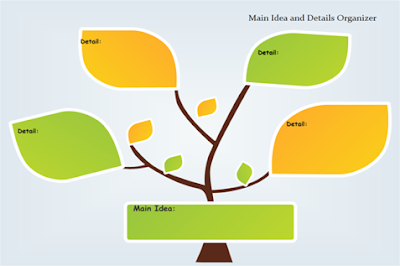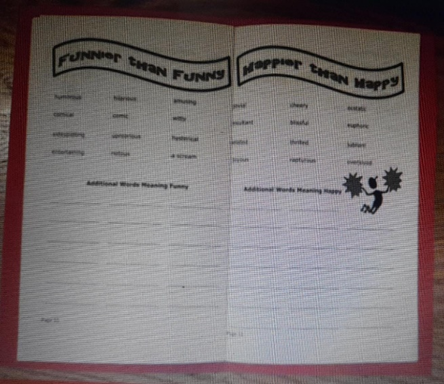Support for Struggling
Writers
Hallo everyone,
welcome back to another wonderful week of my blog. 😊 Trusting that you
guys were greatly informed in my last blog about the six approaches to teaching
writing and are ready for today's blog post. <3
Why support
struggling writers?
Let’s face it,
we have all had some issues with developing our writing pieces at some point in
our lives. Yes! Even teachers too. I would admit even as I am doing this degree
I may second guess what I have written, or may not even know how to start. Students
also become struggling writers because they lack interest in the topics given, or
their writing pieces may be disorganized.
Here are some other reasons why students may struggle to write in the classroom:
But how do we as
teachers support these struggling writers within the classroom?
Here are twelve (12) strategies to support struggling writers and some pointers to assist you in developing each strategy within your classroom:
This will help those struggling writers who may have
issues in thinking of what they should write about a particular topic.
·
This can be done using snowball
writing- For a set amount of time, the teacher assigns one
student to begin the writing process. When the allotted time has passed, the
teacher instructs the class to roll their papers into "snowballs" and
hurl them elsewhere in the classroom. After smoothing up the paper and
reclaiming one of the snowballs, the students resume writing. As necessary,
this procedure is repeated. Once all sections are finished, the paper is
returned to the original author, who makes a final copy.
·
Sketch and Scribble Writing - Students
should be placed into groups of three. Then, as a writing prompt, a picture should
be shown to each student so they are aware that the pictures drawn/used should
be one that allows them to use a narrative voice. Each group member will be
instructed to hide images they are drawing from the other group members once
they begin their drawings of what they think the picture is saying. After the
allotted time has passed, each student passes their work to another group
member who will read it and depict the situation in drawing form using the
description. The task will now be as the last students with each
drawing, to develop a writing piece based on the drawings each group member had
done. Students will compare and contrast their writing pieces and the drawings to
the original picture/drawing.
These
activities will definitely get those students who may not be interested in a
topic, now more intrigued through a fun way of writing.
Have a look at
this great way to use the strategy, through sentence stems:
This will
assist those students who may have issues developing their paragraphs because
they don’t know how to begin.
·
Tell Me About a Time When… Tell a 2-minute story describing
a memory of an event. Prompts should be concrete and short (i.e. it was cold,
it was raining, you were lonely, you lost track of time) and stories should be
true.
·
Tour Guide a
group or a partner around the room, telling brief stories inspired by objects
in the room (like a tour guide in a museum). The story doesn’t have to be a
specific length, but can be loosely inspired by the object or a literal story
about a personal relationship with that object.
These are great
activities to get students ready to write, especially for those struggling
writers who may have a hard time in identifying and creating a logical sequence
of ideas.
Students can use moving to a different area as one of their methods to get beyond writer's block. Results that are worth reading can be obtained by allowing students to write at the library, outside, or while on a field trip. The best and simplest method for differentiating prewriting is to use alternate settings. Additionally, practically all prewriting techniques can be applied outside.
Providing time to discuss with peers- Students can learn quite a bit from one another and so as a meaningful prewriting activity, time is given to discuss ideas with peers or small groups, and listen to the feedback they may offer. Not only does this strategy allow students valuable time to mull over their ideas, but also it provides an avenue for teachers to teach students how to have meaningful and productive discussions about writing.
Teachers may
involve their students in these activities to get those struggling writers, who
may struggle to start their writing piece.
Character Webs- These help writers
organize details about the character in a narrative writing piece. It focuses
on character traits which describe a character based on his words and actions.
These are great for helping the students to not only develop their characters
on a deeper level, but also for teaching them how to strengthen their writing
with “show don’t tell” details.
Story Maps-These are
the perfect tool for planning the key elements of their writing. It reminds
them to think through the story and determine who will be their characters,
where the story will take place, and identify the problem and the solution.
Teachers may involve their students in these activities to get those struggling writers, who may struggle to develop ideas. This will assist them greatly when they begin their writing piece.
Share good examples-
Create an example of ‘What A Good One Looks Like’ or
find one online for the genre you’re teaching. Sharing an example lets your
students understand the features you expect them to include. Talk about what
makes it great. Highlight vocabulary and sentence structures. Unpick it to
learn the craft of the author.
I do-we do- you do- Don't simply
tell your students to start writing; they won't succeed, instead let them see you trying first ("I Do"). As though you had added
audio explanation to your activities, the cognitive process must be described, with this they are able to observe the teacher’s errors, shifts in opinion, and creative improvements. A shared version must now be made ("We Do"), where the teacher will
now ask his/her students to offer suggestions where together, a great example will be set. When this happens, they will be ready to write independently ('You Do'). In the end, the less confident students will closely follow and replicate the shared version.
These activities are what
teachers can use to assist her struggling writers with aspects of the writing
process, in which they will develop on their own in the end.
Take a look at
this example of a mini lesson:
Mini writing
lessons like the one above, can help your struggling students by encouraging
them to write with a purpose, inventiveness, and voice. This is through the
teaching of the many elements of effective writing which will help them to put
those elements into practice.
· Students can be provided with a ‘Wow Words’ Thesaurus to assist them with their writing. This will aid them in choosing words to replace other words which will improve their writing pieces.
·
Students are provided with task
cards in a box which they will use to write a few sentences about a picture or
object introduced to class. This can be in the form of a short writing activity,
which gets your students writing every day.
Tools are very
important in anything we do. These tools and more can assist students who may
struggle with vocabulary or who may lack interest in certain topics.
·
Allow students to choose topics- Giving
students the option to write about their interests might encourage them to
become more involved in both writing and their overall learning. With this,
students will be more eager to write for they are writing about what they know
or what they most like.
·
Allowing students to choose writing
strategies- Students should be able to choose what strategy they would like to
use in their writing. In doing this, they will feel more comfortable in their
writing skills as a result. For, they will be more fluent in their writing for
this strategy is what they are most versatile in.
Students who
struggle with writing are better able to improve when given a choice since they
are now motivated to write because it is what they are most comfortable doing, ‘writing
how and about what interests them’.
· Teachers who teach their students about the author's purpose within their class will help struggling writers grasp the qualities that good writing should have. In this way, students will understand that their writing serves a purpose beyond simple expression. They would now refine their writing to engage readers (teacher/students within the class) in ways that would persuade, inform, explain, and amuse them.
Struggling
writers do put more effort into the project when there is a deeper reason
behind it.
· Here are a few tips in conducting an effective writing conference to assist your struggling writers within the classroom:
Overall, the
strategies I learned this week in the course—instructional strategies for
teaching writing, strategies for helping your struggling writers, and
strategies for revising—will undoubtedly help me as a teacher and my students
understand what is required to create and/or become exceptional writers.
Particularly in helping my struggling writers to get to where they need to be.
Also, helping the rest of my class using these techniques.
Take a look at
this video of how you can motivate your struggling writers:

































Roannah, this is a fantastically informative post. I just wanted to let you know that I will be coming back to this post in the not too distant future to reference the various strategies for helping students who are having trouble writing in my classroom.
ReplyDeleteI must tip my hat off to you! Your blog posts are always informative with a plethora of visuals attached to them. To answer your question about struggles... I think teaching on a whole is a struggle, no matter how you look at it. :) Teaching students how to write, adds to that struggle lol
ReplyDelete